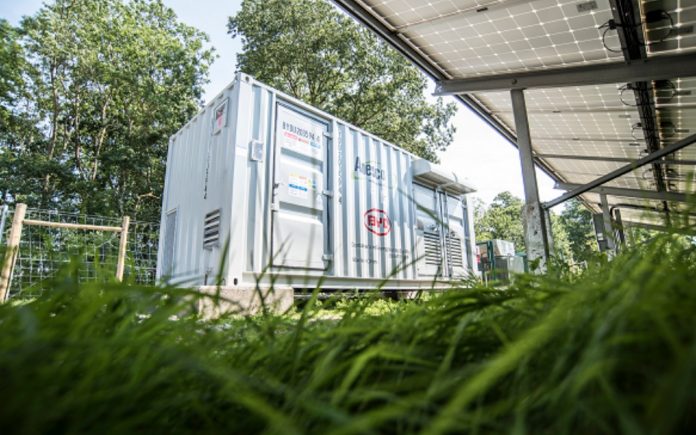Energy storage systems look set to win out over other flexibility providers, as solar and wind generation continues to soar.
Across the five major European markets – Great Britain, Germany, France, Italy and Spain – variable renewable energy (VRE) generation is expected to grow to become the largest share of capacity as early as 2023, according to new research from Wood Mackenzie.
In an effort to balance this growth, flexibility assets will be essential. As such, interconnectors, gas peakers and energy storage capacity collectively are expected to increase from 122GW in 2020 to 202GW by 2030, and then to 260GW by 2040.
Of this capacity, energy storage systems look set to win out as the flexibility asset of choice. Due to decreasing costs and the compatibility with VREs, capacity is expected to grow from 3GW in 2020 to 26GW in 2030, and then to 89GW by 2040.
This would mean that by 2040, there could be 320GWh of energy storage available to balance the grid across the five markets. System duration is also likely to increase over this period, in line with battery cost reductions.
Rory McCarthy, principal analyst at Wood Mackenzie said that the growth of VREs had made gas peakers “more essential than ever,” given the ease with which they can be ramped up and the unlimited duration.
“Yet, by 2030, energy storage will beat gas peakers on cost across all our target markets, resulting in a cloudy outlook for any new future peaking turbines. Fuel and carbon prices are on the up, technology costs are not set for any major decreases and net zero policies will eventually target the decarbonisation of all power market services. Unabated gas is likely to be the EU’s next target after coal, although market forces are already pushing it out.
“For storage and solar-plus-storage, technology costs will continue to decline. The levelised cost for a standalone 3-hour system will reduce by 33% through 2030. Its ability to take advantage of peaks alongside gas plants and capitalise on low and negative prices, which gas plants cannot, pushes it into preferred flexible asset territory,” added McCarthy.
The majority of the growth in battery storage capacity is likely to be front of the meter, however there will also be a jump for behind the meter. Hybrid renewable systems and electricity bill management are both set to make it attractive over the next two decades, along with the resilience proposition it offers.
By 2040, an additional 172GW of solar power is expected to be connected to the grid, along with 169GW of wind. This is likely to further constrain the grid, as we have seen in the UK during the lockdown period.
A drop in demand and surging renewables have led to a grid dominated by green energy, while this has meant May had a lower carbon intensity than any month since the industrial revolution, it has pushed National Grid, which has had to use a wide variety of flexibility tools to avoid a blackout.
Beyond renewables, all other forms of generation are expected to decrease in coming years, with coal expected to see the sharpest decline. In the UK, there are only three coal plants remaining and there has been no coal on the grid since April.
Nuclear is also expected to shrink by 41GW by 2040, while large gas plants will drop 40GW of capacity as governments set their sights on reducing unabated gas in order to decarbonise.
The dramatic changes seen in the energy market may lead policy makers to consider a fundamental restructuring of the market, according to McCathy.
“The market needs to provide the right signals for a high capex renewables buildout. Additionally, the system requires incentives and revenues for low carbon flexible solutions that provide value through service provision in addition to selling energy. This will become more apparent to policy makers as we fill the European power system with zero marginal cost, non-dispatchable power.”
In the UK, the government should include storage within its electricity licence framework to enable it to grow to meet its full potential, according to a recent report by the Electricity Storage Network.






